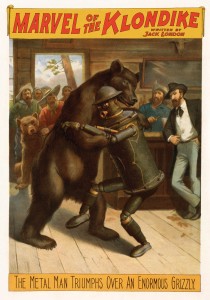
By Bob Hicks
Today Mr. Scatter donned his reporter cap with the story Maryhill Conceives a Broader Canvas in The Oregonian. In case you missed the print version (which has lots of cool pictures, including one of Queen Marie of Romania dedicating the Maryhill Museum of Art in 1926, and another of original mansion owner Sam Hill sitting in the library with a bunch of medals slung around his neck), you can follow the link.
 The gist is this: Maryhill, that unlikely yet undeniably charming citadel far out above the Columbia Gorge, has announced a $10 million expansion to its 1918 building, which is a beloved landmark in Gorge country and was built as a home for good-roads champion Hill, who never actually lived in it. The place has been bursting at the seams, and the expansion plans, by Portland’s GBD Architects, offer it necessary breathing space while keeping a low enough profile to give the beaux-arts style original mansion pride of place. Plans are to have the extension completed by March 2012.
The gist is this: Maryhill, that unlikely yet undeniably charming citadel far out above the Columbia Gorge, has announced a $10 million expansion to its 1918 building, which is a beloved landmark in Gorge country and was built as a home for good-roads champion Hill, who never actually lived in it. The place has been bursting at the seams, and the expansion plans, by Portland’s GBD Architects, offer it necessary breathing space while keeping a low enough profile to give the beaux-arts style original mansion pride of place. Plans are to have the extension completed by March 2012.
Mr. Scatter’s trip out the Gorge (Maryhill is about 110 miles east of Portland, on the Washington side of the river) also gave him the chance to see Maryhill’s temporary exhibition Comics at the Crossroads: Art of the Graphic Novel, which he wrote about here for the Big O. It’s drawn mostly from Portland’s vibrant comics/graphic publication scene, and includes the very cool illustration of Paul Guinan’s Boilerman and a dancing bear shown above.
The museum has already raised $8 million of the $10 million it needs for its expansion, but not everything’s rosy.
Annual attendance has stalled in the 45,000-50,000 range, down from about 80,000 in the halcyon days of the late 1990s, and although excitement surrounding the addition will undoubtedly boost attendance at least for a while, it needs more than a temporary goose. It doesn’t help that the museum’s Klickitat County and its neighbors on both sides of the river have been hit even harder than most places by the recession/depression.
With the growth of its wine industry (the mammoth Maryhill Winery is just down the road from the museum, and a lot of visitors think the two are connected), the long stretch of the windsurfing economy, and several newish cultural attractions, this once isolated end of the Gorge has been opening up a lot to new potential tourist traffic. The Columbia Gorge Discovery Center, for instance, less than 20 miles west of Maryhill in The Dalles, is betting a lot on cultural tourism. Colleen Schafroth, Maryhill’s executive director, said the trouble so far is that visitors tend to take day trips out the Gorge from Portland and so make only one major stop on a typical visit: the wineries but not Maryhill; Maryhill but not the discovery center; the discovery center but not the wineries. A push is developing to promote the area as a multiple-day destination. But that requires more infrastructure: restaurants, inns, motels, coffee shops. It takes time to develop those, and planning to develop them without letting them overwhelm the place. We hear a lot in cultural circles about the rising tide that lifts all boats, but this is dry country, and the boats, while hopeful, are still waiting for liftoff.
In the meantime, Maryhill’s getting itself shipshape. And people are pretty pumped about it. “There are plans and talk in the museum archives that go back to the 1960s,” Schafroth said. “The board and staff have been grappling with this for a long time.”
*
Previous Art Scatter stories about Maryhill:
- Bringing it all back home: Steven Grafe at Maryhill. November 3, 2009.
- Columbia River School: The art landscape in the Gorge. June 23, 2009.
- Warhol at Maryhill: putting on a good face. August 12, 2008.
*
ILLUSTRATIONS, from top:
- The extension blends landscape and building architecture to keep a low profile. C.S. Holmes for GBD Architects.
- Paul Guinan, “Marvel on the Klondike,” from “Boilerplate: History’s Marvel,” copyright 2009 by Paul Guinan.